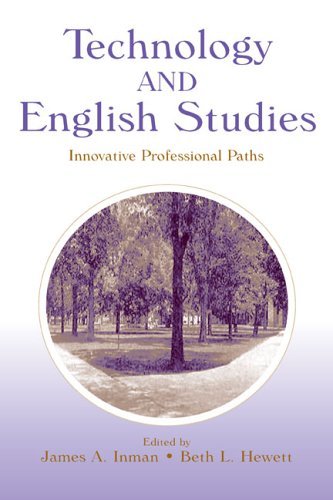![]()
![]()
![]()
|
|
|
Index |
|
Editorial Staff |
|
Submissions |
|
Resources |
|
Archives |
Inman, James A., and Beth L. Hewett, editors. Technology and English Studies: Innovative Professional Paths. Mahwah, NJ: Lawrence Erlbaum Associates, 2006.
 Introduction
IntroductionA collection of essays about alternate approaches and individual analyses, Technology and English Studies: Innovative Professional Paths is as helpful as it is enlightening. This is largely due to the variety of self-reflective pieces within the collection itself, many of which focus on not just technology and English studies but also pedagogy, information literacy and freelancing. Therefore, it is beneficial to view this edited collection not so much as a how-to concerning the path to professionalization but instead as an offering of many paths to many kinds of professionalization, ranging from the more traditional (teacher/scholar) to the more unconventional (smarthinking.com "estructor").
Overview
The essays compiled here are as varied in academic approach as they are in narrative structure, ranging from self-reflective chronological development to evolutionary rumination in the form of hypertext. And the freedom with which the contributors engage in such compositions gives increased perspective on how others in English studies might construct professional paths in word as well as action. Throughout, too, contributors maintain perspectives that are unique as well as educational, often concluding their pieces by summarizing things learned by way of alternative paths to professionalism through English studies. Many of said summaries come in the form of bulleted points which makes for increased emphasis now and easy reference later.
Conclusion
--James Schirmer
|